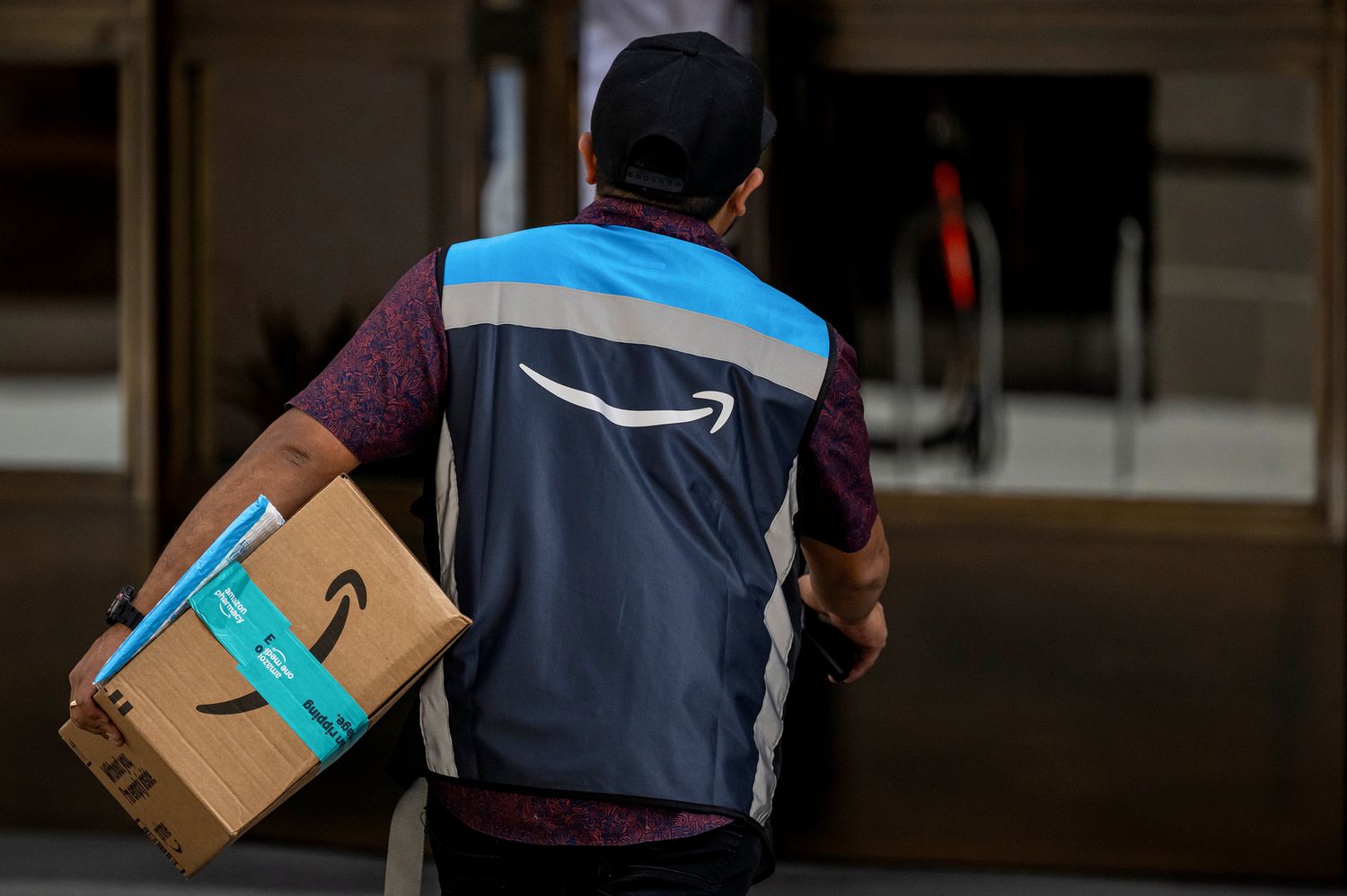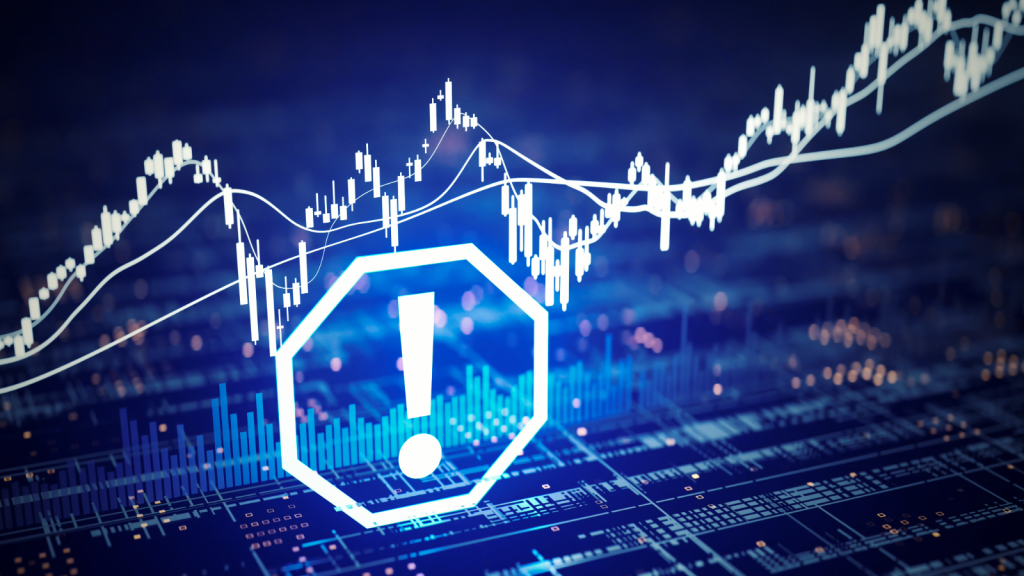Last call for tonight’s robotics event with Luke Lango … agentic AI is already arriving … did Beijing just crack the door open to talks? … perspective on volatility
In recent Digests, I’ve been highlighting tonight’s humanoids/robotics investment event with our technology expert, Luke Lango.
If you’re still unsure about the scope of this opportunity, here’s the title of one of CNBC’s stories on Tuesday:
“Morgan Stanley says humanoid robots will be a $5 trillion market by 2050. How to play it”
The numbers in the article are eye-opening. From CNBC:
Wall Street continues to double down on its forecasts of a multi-trillion dollar global market for humanoid robots, suggesting it will grow to be significantly larger than the global auto industry by the next couple of decades.
New estimates from Morgan Stanley analysts forecast $4.7 trillion in global humanoid revenue by 2050, which the firm said is double the total revenue of the 20 largest automakers in 2024…
Analysts estimate that global humanoid adoption will accelerate and reach roughly 1 billion units by 2050, the investment bank said.
Elon Musk, Tesla’s CEO, shares this same perspective. Last year, he predicted that Tesla’s humanoid Optimus will “overwhelmingly be the value of [Tesla].”
Here’s more of what he said about humanoids on Tesla’s Q2 2024 earnings call:
- Long-term, Optimus has the potential to generate $10 trillion in revenue
- It won’t be many years before Tesla is making 100 million robots a year
- Musk sees a path for Tesla to be the most valuable company in the world, possibly bigger than the next five companies combined, overwhelmingly due to autonomous vehicles and autonomous humanoid robots.
To add context to Morgan Stanley’s $4.7 trillion market size prediction, in 2024, the market cap of the entire global pharmaceuticals industry was roughly $1.7 trillion.
Humanoids are going to dwarf that.
And how about global defense/military spending? According to CNN, that clocks in at $2.7 trillion.
So, these next-gen robots will nearly double that.
***What we’re seeing right now with robotics/humanoids has shades of the earliest days of the internet boom
And though this technology will take years to reach full bloom, the early investment gains have already begun. Luke believes they’re about to accelerate:
If history is any guide, the next 24 months could be even bigger than the last 24 — just as 1998 and 1999 outshone 1995 and 1996 during the Dot-Com Boom.
In fact, my team and I have been tracking the price action of stocks in the AI Boom that started in 2023, relative to the price action of stocks in the Dot-Com Boom, from 1995 to the peak in 1999.
The price trajectories match almost perfectly.
We haven’t seen a setup like this in nearly 30 years, when internet leaders saw gains of 800%, 2,800%, and even 3,000%…
Luke isn’t pulling those numbers from thin air. He’s referring to the gains seen by Cisco, Viavi Solutions, and Qualcomm between 1997 and 1999 (though there are abundant other examples he could have used).
Circling back to tonight, get ready to cover lots of ground: the historical parallels to the 90s… why the AI boom is far from over… why humanoids/robotics are critical for investor portfolios in the years ahead… why May 7th could mark a mad dash back into the market that Luke wants to front-run… and details about a group of seven small-cap stocks that are poised to benefit from the humanoid boom.
It’s not too late to join. By clicking here, you’ll be instantly registered to attend, and we’ll see you at 7 PM Eastern.
***Ready for AI to do your shopping?
On Tuesday, Bloomberg reported that Mastercard is working with Microsoft so that AI agents can shop for consumers online, even make payments for them.
Here’s Bloomberg:
Under the new program, a shopper could prompt an AI agent — Microsoft’s Copilot, for example — to search for a pair of yellow running shoes in a particular size.
The agent would then search and offer the customer options, and then be able to make the purchase while also recommending the best way to pay.
The AI agent won’t have complete autonomy to buy without the consumer’s input. But it’ll basically tee everything up and await that final green light.
But agentic AI isn’t only on the cusp of transforming shopping.
Here’s The Wall Street Journal from February, discussing AI agents and healthcare:
Grace, Max and Tom…are artificial-intelligence agents: bots that execute tasks end to end.
Already, AI agents can automate the ordering of groceries and filing of expense reports, and now venture-backed companies are designing them for healthcare tasks such as enrolling participants in clinical trials, ensuring proper care after hospitalization and helping doctors quickly learn medical histories when seeing patients for the first time.
And how about AI agent “tutors” that help your child with those pesky math problems?
Here’s PurelyStartup.com:
47% of students fail to grasp algebraic concepts in their first attempt. That statistic isn’t just a number—it represents millions of frustrated students, overwhelmed teachers, and countless lost learning opportunities.
Some schools are already embracing AI teaching assistants to tackle this challenge…in what’s becoming education’s most transformative shift.
These AI agents for education don’t just explain concepts differently—they adapt to each student’s learning style, provide instant feedback, and offer unlimited patience.
There are plenty more examples of AI agents impacting different corners of our economy, but you get the idea.
The bottom line is that this technology is racing toward us right now. And these cutting-edge bots are the frontrunners of the full-blown humanoids that aren’t too far behind.
Consider the scope of how this will change your life – and the world around you.
From an investment perspective, we’re effectively at Day 1.
Circling back to Luke and how he recommends investors position themselves, here’s your last reminder to join him tonight (here’s that one-click instant sign-up link again).
***The trade war is already bruising China – but is Beijing softening?
Switching gears, yesterday, we learned that China’s manufacturing activity has nosedived in the wake of the trade war.
China’s Purchasing Managers’ Index fell to 49 (a reading below 50 signals a contraction). And new export orders fell to their lowest since December 2022.
Will it result in trade war concessions?
Here’s The Wall Street Journal:
[The weak data] adds to pressure on Chinese leader Xi Jinping to reach a deal on trade with Trump—though for now the clear message from Beijing is one of resolute defiance in the teeth of what it describes as U.S. bullying.
Earlier this week, we dove into Beijing’s “defiance,” highlighting how Chinese culture places a major emphasis on “saving face.” We saw an example a few days ago when the Chinese Ministry of Foreign Affairs posted a video to social media saying, “China won’t kneel down.”
But are we seeing green shoots?
Yesterday, Chinese state media said there would be “no harm” in having trade talks with the White House. This hints at a softening of Beijing’s position.
In a social media post, Yuyuan Tantian, which is an account affiliated with state media, said:
If the US wishes to engage with China, there’s no harm in it for China at this stage…
If it is talks, the door is wide open. If it is a fight, we’ll see it through to the end.
Seems like an effective tightrope walk of “saving face” while also signaling a willingness to find a deal.
We’re encouraged, but let’s be cautious about reading too much into it. On that note, here’s the WSJ again:
Xi has signaled that Beijing is prepared for a long battle over trade…
[And though various exemptions have been made on both sides] substantive talks on trade between Washington and Beijing don’t appear to be happening.
***Important perspective on recent volatility
As I write Thursday, the market is soaring (mostly the Nasdaq) due to strong earnings from Microsoft and Meta.
But given the volatility we’ve seen over the last two months, tomorrow could bring a “down” day that erases all these gains and more.
So, let’s end today by contextualizing this volatility.
First, a disclaimer: We each have a unique investment path. We come to today’s market with different ages, investment goals, incomes, net worths, investment timeframes, and so on. So, please do only what’s best for you and your specific investment situation.
But if you have a handful of years left for your stock portfolio to develop, Thomas Yeung offers important perspective.
For newer Digest readers, Thomas is Eric Fry’s lead analyst. In his Investment Report Weekly Update from Tuesday, Thomas began by explaining why we aren’t out of the woods with the trade war, and the potential for empty shelves in the coming months.
But it’s how Thomas ended his update that’s important for long-term investors to remember (equally so for investors who are buying into humanoids/robotics today).
I’ll let him take us out today:
Four years from now, no one will be thinking about tariffs.
Instead, we’ll be talking about artificial intelligence, robotics, and perhaps even how the chaotic rollout of import taxes were good for forcing firms to re-onshore production.
So, don’t let [a stuttering, uneven] recovery shake you from the market.
Have a good evening,
Jeff Remsburg




























